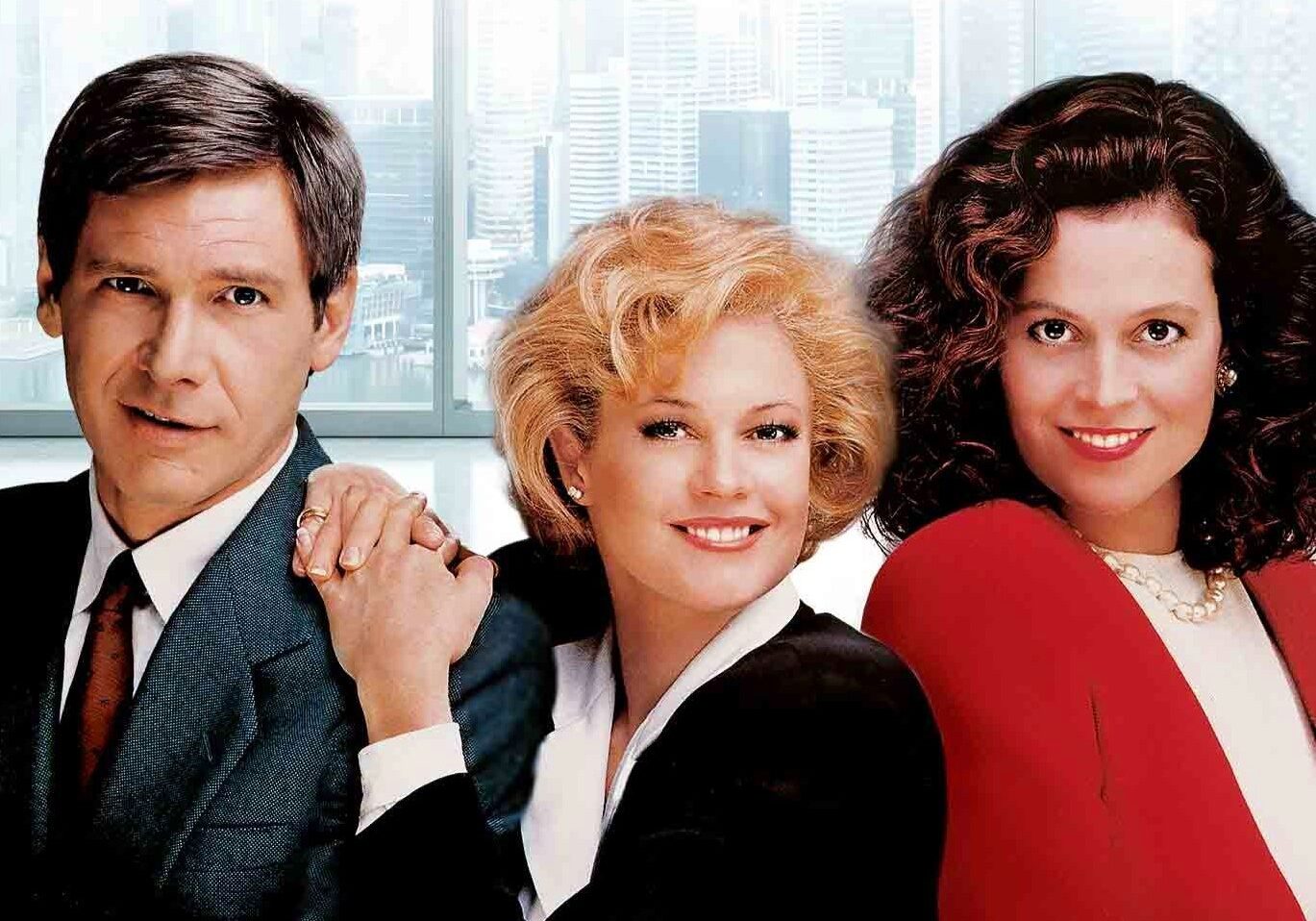I used to write all of my Epsilon Theory notes by starting with two or three or twenty quotes and images, so that the note wouldn't really start until like ... page 5. It was an affectation of the sort that a lot of new writers adopt, and I dropped it when I finally realized it had become a shtick.
But sometimes the old ways are the best ways. Eight years ago, here's how I started a note that was also titled "Hollow Men, Hollow Markets, Hollow World".

| Kurtz: | Did they say why, Willard, why they want to terminate my command? | ||
| Willard: | I was sent on a classified mission, sir. | ||
| Kurtz: | It’s no longer classified, is it? Did they tell you? | ||
| Willard: | They told me that you had gone totally insane, and that your methods were unsound. | ||
| Kurtz: | Are my methods unsound? | ||
| Willard: | I don’t see any method at all, sir. | ||
| Kurtz: | I expected someone like you. What did you expect? Are you an assassin? | ||
| Willard: | I’m a soldier. | ||
| Kurtz: | You’re neither. You’re an errand boy, sent by grocery clerks, to collect a bill. |
I first saw Apocalypse Now as a college freshman with two roommates, a couple of years after it had been released, and I can still recall the dazed pang of shock and exhaustion I felt when we stumbled out of the theatre. Nobody said anything on the drive back to campus. We were each lost in our thoughts, trying to process what we had just seen. Our focus was on Marlon Brando’s Colonel Kurtz, of course, because we were 18-year old boys and he was a larger than life villain or anti-hero or superman or … something … we weren’t quite sure what he was, only that we couldn’t forget him.
When I reflect on the movie today, though, I find myself thinking less about Kurtz than I do about Martin Sheen’s Captain Willard. Both Kurtz and Willard were self-aware. They had no illusions about their own actions or motivations, including the betrayals and murders they carried out. Both Kurtz and Willard saw through the veneer of the Vietnam War. They had no illusions regarding the essential hollowness of the entire enterprise, and they saw clearly the heart of darkness and horrific will that was left when you stripped away the surface trappings. So what made Willard stick with the mission? How was Willard able to navigate within a world he knew was playing him falsely, while Kurtz could not?
Eight years ago.
Before Trump. Before Covid. Before a hot war with Russia and a cold war with China. Before Bitcoin became Bitcoin! ™.
It's hard to remember the before-times, right? It's hard to remember how alienated and disenchanted and hollowed-out we all felt THEN, even before all of the crap of the past eight years.
Forty years ago, as a teenage boy, I imagined myself as Kurtz, the anti-hero/superman/supervillain.
Eight years ago, as a 50-year-old man, I downgraded my imagination to Willard, the good soldier/assassin/errand boy.
Today? LOL. Ego is a powerful drug, and it takes events like those of the past eight years to draw it out of your system. Today I finally know who I am in Apocalypse Now, who we ALL are in its Narrative arc terms.
I am a villager.

We are all villagers in Kurtz's world, an unnatural, literally insane world created by proclamation and fiat. Sure, our standard of living may be a little bit better than in the picture above, but the essential hollowness is the same. Maybe worse. And now an implacable agent of change - in the movie it's the assassin Willard but in the real world it's inflation, war, disease and climate - has arrived to collect the bill that is due.
This is an Old Story.
I don't just mean that Apocalypse Now was taken directly from Heart of Darkness, Joseph Conrad's 1899 novel. I mean that the story of hubris at a societal level, where prideful human leaders lift themselves and their people up to unnatural heights by stealing what is not rightfully theirs, only to have their society struck down in retribution, is probably the oldest social narrative arc of them all.
And that is exactly what our Kurtzian leaders have done in the United States over the past 25 years. In their overweening pride, they have stolen what is not rightfully theirs to lift themselves and their people up to unnatural heights. Through monetary and fiscal policies that have pulled forward future growth and productivity into the present, they have not only stolen wealth and prosperity from our children and our children's children, but they have also created a political dynamic that has hollowed-out the Constitution and its attendant political norms.
We are a husk of ourselves. A wealthy and pampered husk of ourselves, sure, where I find myself disappointed if the local liquor store has only five different artisanal mezcals to choose from, but a husk nonetheless. Sometimes I wonder what the 5th-century Roman equivalent of artisanal mezcal would have been.
How did this happen? Here, I'll show you.










The progression from Kurtz, to Willard, to villager. Bingo! Ben previewed that change in OH last week by discussing feelings of vulnerability in the miasma of recent events. We are inculcated with the arrogance that we can never be the villager. Adopting the villager point of view is the only way out of this.
Does the data set for the orange line in the chart get updated, monthly, quarterly or annually? (could you also link to the data set directly? Not sure I’m finding it exactly when I search on FRED)
I’m curious to see what the YTD damage has been so far in trying to forecast for the period ahead.
I’m also curious about the size and impact of crypto on this data set. To go from a $2trillion market cap at the beginning of January
to a market cap of about $882 billion currently is a pretty steep drop.
Granted, it is dwarfed by public, private and other markets but it is a non-zero contribution to what should be a declining orange line.
I guess I’m just looking for a silver lining in what an implied reversion to the mean looks like wealth wise.
Because the third outcome is a combination of both your scenarios - large wealth destruction AND wage/price controls and fiat policies. (A very dismal use of the AND philosophy to be sure). And it would be very grounding to be able to get any help in discerning between real alarm in the world and fake alarm from fiat world.
Ben’s other message is that it has been real alarm in the real world (those who are below median wealth and don’t own financial assets) the entire time the orange line has been accelerating away from the blue one!
Point 1. Apocalypse Now - greatest movie of all time. The only reason it is second to Pulp Fiction on my favorite movies list is because Pulp Fiction is far less harrowing to watch (amazing they are referenced in the same note!). Even thinking of Martin Sheen’s line reading, “I don’t see any method…at all…sir” - haltingly because he is too bewildered by the encounter to do anything but tell the truth, but also aware that in this audience with a mad king who fancies himself a god, any word he utters might get him killed - gives me chills every time. The strange thing is, living in this insane world, where people have given themselves over to ridiculous narratives and worship of missionaries, I feel just like Willard in that moment when I tell people what I really think (not literally killed…yet) of the nonsense they apparently buy into.
Point 2. I’m sure many have seen this website, chronicling how myriad indicators of real productivity and growth abruptly stagnated as indicators of the paper wealth and the “hollow” economy took off starting around 1971 : https://wtfhappenedin1971.com/ I’ll repeat my refrain that while these effects are often attributed to leaving the gold standard, and no longer having “sound” money, I think those are actually both the effects of increasingly restricted supply of cheap energy. Tim Garret of University of Utah has produced a series of papers directly linking economic growth and wealth production to the rate of increase in primary energy consumption as a matter of thermodynamics. https://twitter.com/nephologue/status/1537848492323876865
The idea is that, increasing the potential to harness untapped energy and resources and integrate them into organized networks of utility is, in a literal physical sense, what wealth production is. Producing wealth means either growing those networks or make them work faster and more interconnectedly, both of which require energy. If your ability to do that is limited or diminishing, you will not see real growth, although you may still see nominal growth.
In other words, when nominal growth exceeds the requisite level of primary energy consumption, this shows up as inflation (and probably other ‘hollow economy’ indicators). The US left the gold standard in '71, but consider also that it suffered severe energy supply shock lasting about a decade. What happened? Stagflation - high inflation, low real growth, the hollow economy really began then. Look at the pandemic. Primary energy consumption dropped precipitously as a matter of demand, then demand returns only tentatively due to latent pandemic related drag, combined with two absolutely titanic money bazookas - what followed? Massive inflation, Bitcoin → Bitcoin!™, stocks → Stonks!, crypto bubble, housing bubble, everything bubble.
This matters because EROEI of energy sources has been steadily falling for several decades, meaning the ability to increase primary energy consumption has been getting increasingly restricted. It was thought that we would hit peak oil in the 2000s, and while that was averted thanks to revolutionary innovations in tight oil and shale, output increased but EROEI did not improve nearly so much. And so we are still on a path to an ever-increasing proportion of energy having to be reinvested into future energy harvests, reducing the potential for real growth. This is terrible news, by the way, for so-called renewable energy sources by which might be the area where we are seeing perhaps the largest misallocation of capital in economic history. The only thing that could improve this situation is nuclear, or some yet undiscovered energy source (not energy carrier, which is what batteries and hydrogen cells are).
So, we have to recognize that the monetary policymakers have been playing a crooked game for the past few decades, especially the last one, but the reason they are doing that is perhaps because, as a matter of physics, it is the only game in town.
Point 3 This isn’t just a story about the wealthier sect ripping off the rest. There was massive amounts of fraud in the COVID assistance programs for rent and unemployment assistance from regular people. Many of the COVID rent protections and assistance did not actually require a person to declare that COVID had any effect on their life in any way. In New York it was basically a “get out of rent free” card, later ruled unconstitutional by the New York Court of Appeals as a taking. In some states the unemployment benefits could be and were utilized people who were not actually employed in the YEAR prior to the pandemic, and now the unemployment agencies are in a situation where they are trying to claw back money and demand something, anything to prove that you did in fact qualify for unemployment. Unfortunately certain political factions wanted to PREVENT the enaction of measures that might have mitigated this amount fraud waste and abuse.
What’s going on here is that, in an era of limited real growth, Malthusian competition effects are taking over. It’s okay to pretend fraud and abuse don’t exist, at least not among your constituents, because the pie isn’t growing and we’ve gotta do what we gotta do to get our piece. So we adopt whatever narrative suits us, and to hell with truth or sanity. And this really increases the risk of disastrous nationalization and price control policies.
My Answer There is a third way, between wealth destruction and disastrous economic management policies. We need massive investment in energy supply, first for fossil fuels supply increase, and deployment of nuclear and research into the discovery of new energy sources. This is the only way to repay what’s been stolen from the future without destroying what we have now. Or, maybe, another way of saying it is, this wouldn’t be stealing from the future the way we are now, but borrowing from it and in return creating greater growth potential for the future.
Yes…but first you have to see that you are a villager. This is why the Emperor Having No Clothes is such an excellent story. Because we all see ourselves as the boy (the contrarian who can see through the haze) or the villagers (the peoples that got fooled). We never recognize that we are the Emperor with false clothing (false ideas, an inability to recognize the water in which we swim) and that we can’t see the world until we lose our air of arrogance and become a villager once more.
I’d also like to point everyone to a somewhat obscure work, Joseph Tainter’s Collapse of Complex Societies. He argues based on data from Roman Empire, the Mayans, and Chacoan Society of the American Southwest, and modern results, that the collapse of complex societies can be explained by the following:
(please forgive the previous owner’s markup)
Society begins to break down as
Most of the resistance from the non-ruling class will be passive. For example, “[i]n both the later Roman and Byzantine Empires, the overtaxed peasantry offered little resistance to the foreign incursions that ultimately toppled these regimes.”
That bold sentence I emphasized as especially disturbing given @bhunt’s comments on how the ruling class might choose to respond to the lack of real growth in the long term. He argues that one of the classic responses is temporary resurgences in state strength as they re-assert control at a new, higher level. These will be your strong leaders and authoritarians, but exercising increased power of course leads to greater complexity and imposition on the productive base of society, and only at best stalls the ultimate decline.
It’s not all doom and gloom though!
So we need a new energy subsidy! We are tapping out fossil fuels, the atom is not fully tapped out yet, so we can increase reliance on that. No idea what the next new energy discovery will be.
Territorial expansion for the entire world economy is only possible through…interplanetary expansion and there’s some new energy source there? Maybe Elon is right about colonizing Mars and we really are at the beginning of a space travel revolution? That’s not where I thought reading this note would take me but…here we are.
It is notes like this that made me subscribe to ET!
This one is a bit grimmer than the notes I first read , but truth is , we are several years down the road of the Long Now , and not only have we not reversed course , we have stepped on the accelerator.
This could easily be the final note of that series.
I think there might be another consequence , we are going to export an enormous amount of our inflation to very poor countries around the world , with catastrophic results for them. Some rich ones too.
Energy is Life
Love this. Thank you.
Here’s the link to the Household + Nonprofit Net Worth (it’s measured quarterly): Households and Nonprofit Organizations; Net Worth, Level (TNWBSHNO) | FRED | St. Louis Fed
And here’s the link to US Nominal GDP (also measured quarterly): Gross Domestic Product (GDP) | FRED | St. Louis Fed
Great post, David. Thank you!